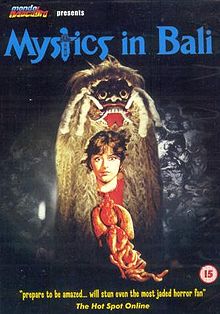
“Di Ingon ‘Nato” (2011) is rough around the edges, sure, but one can argue that it’s more appropriately primitive because of it, given how everything hinges on its transposition of first world zombie tropes into far-flung third world boondocks, where people get around on cheap mopeds, an under-manned and under-equipped clinic passes for a hospital, combat-readiness boils down to jungle knives and single-shot rifles, and no one knows zombie lore enough to go for a head shot. “Di Ingon ‘Nato (Not Like Us)” by Brandon Relucio and Ivan Zaldarriaga Tjut Djalil), “Wild Zero” (Tetsuro Takeuchi), “Pasiyam” (Erik Matti), “Exte: Hair Extensions” (Sion Sono), “How To Disappear Completely” (Raya Martin), “The Red Shoes” (Kim Yong-gyun), “The Forbidden Door” (Joko Anwar), “Pridyider” (Rico Ilarde), “Salvage” (Sherad Sanchez), “Matangtubig” (Jet Leyco), “Dream Home” (Pang Ho-cheung) and “Noroi” (Koji Shiraishi). Obviously, they barely scratch the surface, but if you’ve had it with the same-old and your curiosity is piqued by the list, here’s a few more to look up, of varying quality and flavors and temperaments: “Mystics In Bali” (H.


The list below is meant to be a spanner in the works, throwing props long overdue and much deserved, but is also an index of possible new pleasures. The Philippines, meanwhile, remains stupidly, stubbornly determined to bash out the same old wine without even bothering to put it in new bottles, with mainly vengeful spirits terrorizing young actors, for some of whom no amount of workshopping can make them worthy of being called one.ĭespite this, Asian horror cinema is still an embarrassment of riches, if you know where to look and what to look for. The combined outputs of Hong Kong, Malaysia, Vietnam and Indonesia are still occasional at best. Japan, Thailand, and Korea have been undergoing fluctuations in quality since. Arguably, the two 90s horror films that game-changed the genre didn’t come out of Hollywood - Myrick and Sanchez’s “Blair Witch Project” and Hideo Nakata’s “Ringu” - and most post-90s horror films run on the modified engines of either of these two films, and oftentimes a confluence of both. Western critics gregariously upheld the heady, volcanic surge of Asian horror films in the 90s as a “new wave” poised to rehabilitate and reinvigorate the genre, even if the exaltation smacked of hegemony and hubris, if only for the implication that Asian horror had somehow “caught up” and that Hollywood was somehow “in charge” of the genre to waylay it - circumventing the fact that Asian horror has been trumping Hollywood horror for decades, and still does.

Perhaps it’s a residue from how Eastern cultures have a more pervasive, more insidious spiritual firmament than America: the spatial displacement, the overhang of dread, the dreamlike languor and casual surrealism, the often brutal lack of closure, and the gnawing sense that the supernatural was a matter of fact.Īsian horror isn’t above solving its own mysteries, but Hollywood horror seems in the grip of a compulsion to constantly whip the mask off the monster to reveal a backstory: Indian burial grounds, Scooby Doo endings, whistling past graveyards, all that. The pull Asian horror always had with me, aside from obligatory defiance to the hegemonic narratives, are the specific varieties of irrational unease that have become rough ordinance with most Asian horror cinema, one which Hollywood has nothing but disdain for. Manila (CNN Philippines Life) - What Asian horror cinema seemed to understand a lot better than Hollywood horror ever will is that fear is irrational, and that the more irrational things get, the more terrifying things are.


 0 kommentar(er)
0 kommentar(er)
